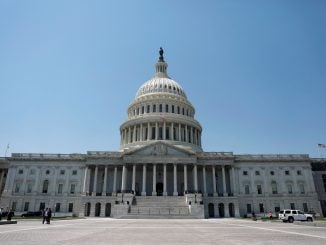
Shortly after taking office, President Joe Biden joined the war on the carbon atom by opening a front against the US energy sector. He cancelled the Keystone XL pipeline project permit and froze the leasing of prospective oil and gas producing properties in the Alaskan National Wildlife Refuge. On Dec. 8, 2021, he signed an Executive Order that set a goal of “100% carbon pollution-free electricity (CFE) by 2030, at least half of which will be locally supplied clean energy to meet 24/7 demand.” Although the Executive Order did not define “locally supplied clean energy”, one must assume that it meant solar and wind powered electrical generation.
In 2021, 60% of the electricity produced in the US came from fossil fuel powered plants; 20% from nuclear plants and 20% from renewable energy sources. Wind and solar energy production in the U.S. in 2021 accounted for 13% of the total electrical energy output. While it may be possible to increase the capacity of wind and solar electrical production in the next 5-10 years, the big problem remains the unreliability of wind and solar energy sources. They are vulnerable to changes in weather (clouds obstruct sunshine and the wind does not blow all of the time) as well as extreme weather events, as the recent winter disaster experience in Texas demonstrated.
Permitting nuclear power plants remains a challenge. On Feb. 9, 2012, the Nuclear Regulatory Commission voted to permit the first nuclear power plant to be built in the US in over 30 years, over the objections of its chairman, who voiced safety concerns.
Whether the proponents of the global warming hypothesis like it or not, it is not possible to replace the 60% of electric power production in the U.S. by 2030 with alternative energy sources. Such a mandate would require a rapid increase in wind and solar powered electricity generation and the reconfiguration of the U.S. power grid, resulting in more unreliable energy output. Fossil fuel plants would still be required to back-up a large portion of the unreliable renewable energy sources. Remaining fossil-fueled power plants that were in operation would be required to purchase carbon credits to offset emissions to achieve 100% carbon-free operations. CO2 emissions will not be reduced by buying carbon offsets. However, operating costs will be increased and the reliability of the power grid decreased. The consumer will end up footing the bill for higher energy costs and less reliable electric grid system.
The only entities that benefit from President Biden’s policies will be firms that trade carbon credits and offsets at the expense of energy consumers. In 2004, when Al Gore formed Generational Investment Management in London with a partner from Goldman Sachs, the world-wide market for trading carbon credits was estimated to be $10 billion. In 2019, it had grown to $210 billion and is projected to reach $1 trillion within a decade. It is the height of naiveté to think that our economic competitors in the world such as China and India will wreck their economies based on a fraudulent global warming hypothesis.
The predicted result of these actions will be less reliable, more expensive energy, increased costs to the consumer and substantial damage to the competitive ability of U.S.-based companies who depend on market-based energy costs to manufacture, distribute and export their products.
Guy K. Mitchell, Jr. is the author of a book titled “Global Warming: The Great Deception-The Triumph of Dollars and Politics Over Science and Why You Should Care.” It was published on Amazon.com on January 4, 2022.



